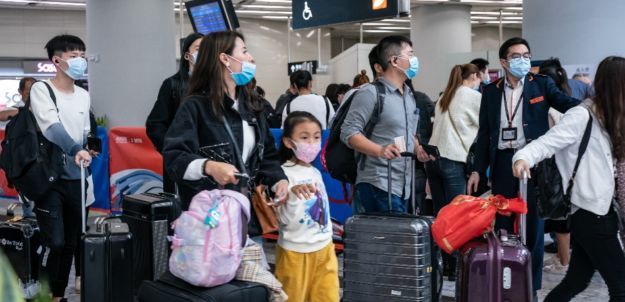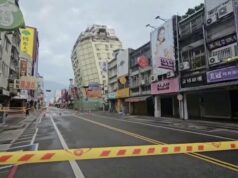Eight Factors On Corona Virus Affecting China

As per the Chinese Governments claim the COVID-19 outbreak in China has begun to decline outside Hubei Province, though its severity within the province is still a top secret. Meanwhile in many countries all over the globe it is on the rise. This fully shows that the epidemic is a challenge faced by all humanity and needs to be addressed by all countries.
China’s reaction in combating the outbreak was initially very slow though it picked up speed once they realized its severity. Timely, accurate and authoritative information disclosure is crucial and the Provincial authorities should have done it right from the start. Lack of authentic information in the public domain undermined the solidarity and cooperation between human beings and even created panic which harmed the efforts to fight the epidemic. Here, we summarize eight factors which led to strong international public opinion on the Origin, Spread and Control of Corona Virus and its impact on World Trade and Economy :
1. ‘Economic fall’
Under the coronavirus epidemic, the streets in Chinese cities were empty for quite some time time, and there is no doubt the economy will be badly affected to a large extent. The fundamentals of the Chinese economy will change and growth will plummet from mid-high speed before stabilizing at a certain level. The New York Times published an article on February 11 entitled “Like Europe in Medieval Times’: Virus Slows China’s Economy” It said that the epidemic has moved the Chinese economy to a low gear.
This coronavirus epidemic has been widespread, and many industries, such as catering, tourism and film and television, have been severely impacted. However, it should be noted that the impact of the epidemic on China’s economy is mainly reflected in the restriction of the demand side, resulting in a structural imbalance between supply and demand. However the means of production are still there, and production equipment and technology have not been affected by the outbreak. So the outbreak which has dented the internal dynamics of the Chinese economy may recover in the long run but not reach the present level. International Monetary Fund (IMF) spokesman Gerry Rice said at a regular press conference on February 13 that “over the long term we remain confident that China’s economy is resilient.” The IMF expects the Chinese economy witness a sharp decline in economic activities followed by a attempts at recovery. With improvements in containing the epidemic, the supply side will gradually move towards normal, and at the same time the potential demand may see slow increase.
Structurally China has a strong and resilient economy.
2. ‘China-US decoupling’
Under the coronavirus epidemic, the resumption of work in many factories in China has been delayed, which has affected the global supply chain. This has started leading to “international companies fleeing China” and talks have started regarding US and Chinese economies “decouple” as a result of the outbreak. US Secretary of Commerce Wilbur Ross told Fox Business Channel on January 31 that the novel coronavirus epidemic helps “accelerate the return of jobs to North America, some to US and probably some to Mexico as well,” adding that factors such as this will prompt US companies to reevaluate risks, such as the supply chain of China-related businesses.
In the face of the epidemic, the Chinese government has surely demonstrated its firm belief in winning the battle against the epidemic. However It is believed that the outbreak will last longer, and will cause lasting damage to the economy. Business confidence in the future has not disappeared but certainly dimmed a lot. Unlike the SARS epidemic in 2003 after the epidemic, people’s desire for consumption may reduce and the economy may not see rapid growth.
Compared with the many of the other South Asian and South East Asian countries, China’s tertiary industry accounts for over 50 percent. Naturally, companies over fear if the next such epidemic,are thinking if abandoning and go to a place where production cost is cheaper and things are safer.
The US government’s is also pushing for the return of manufacturing and it is not new. It began during the Obama administration.
With China’s industry in a flux many enterprises that can no longer adapt to the existing conditions will leave. This is the natural law of economic development, and it may lead to the exodus that Ross is talking about.
3. ‘China image collapse’
Under the coronavirus epidemic, voices in the international public opinion have begun tarnishing the image of China.
For example, on February 6, under the headline “This is not a coronavirus, it is an official virus”, a Deutsche Welle report in Putonghua said that China’s governance system is not a modern governance system, so it was vulnerable in the face of the epidemic. On some overseas social media, some people have argued that “China’s national image has collapsed”, in order to disparage China’s image as a responsible power. They even mentioned that China would not be able to build a moderately prosperous society in all respects as planned.
It is clear that the above slander is bit too harsh and not based on clear irrefutable facts. However The “China threat theory” is spreading in international public opinion.
After the outbreak of the coronavirus epidemic, the Chinese government quickly set up a special team to deal with the outbreak, deployed them extensively throughout the country, and assisted relevant countries in evacuating personnel. Though after a few evacuation there have been problems.
On February 16, in response to the shortcomings and deficiencies exposed in the response to the epidemic, the Chinese government did improve the biosafety law, the national emergency management system, and the distribution of production capacity of key materials. China’s epidemic prevention measures have been praised by the international community. French President Macron expressed admiration for China’s effective measures in fighting the epidemic. World Health Organization (WHO) Director-General Tedros Adhanom Ghebreyesus praised China for taking many prevention and containment measures that go far beyond the relevant requirements for responding to emergencies.
4. ‘Sick man of Asia’
Amid the outbreak of the COVID-19, governments, enterprises and people from dozens of countries including India have donated humanitarian aid to China to support the country’s fight against the epidemic.
Though the Wall Street Journal published an article under title “China Is the Real Sick Man of Asia” on February 3.
China was once weak due to its seclusion and was taken advantage of by Western powers, which derogatorily called China the “sick man of Asia.” Such contemptuous words have been a scar on Chinese people’s mind. With unremitting efforts of more than 100 years, China is much stronger than it was, with people’s general health status reaching a new high.
After the founding of the People’s Republic of China in 1949, the country has been improving its public health status, eliminating malignant infectious diseases such as smallpox and cholera, and developing a cure for schistosomiasis which once threatened Chinese people for a long time.
China is completing the building of a moderately prosperous society, the country is rapidly increasing the budget for medical treatment and public health, assuring residents in cities and towns have basic medical insurance.
5. Yellow Peril hysteria
On February 1, German weekly magazine Der Spiegel had a cover headline saying the novel coronavirus was “Made in China.”
The Western world regards the Eastern world as a threat, and fears itself will lag behind the latter, and thus refuses to accept the fact that the Eastern world has become more developed and much stronger than it once was. The West wants to safeguard its dominance in the world.
With this being the case, some nationalists in the West have taken advantage of the COVID-19 epidemic to spread this hysteria.
It is high time to put an end to the farce of Yellow Peril hysteria that encourages people to play a “hunger game.”
6. 1984 metaphor
To fight against the COVID-19, China has adopted various high-tech measures, such as Big Data and artificial intelligence, to control population flow and reduce cross-infection risks. However, some Western media outlets seem to have been doubtful. Real Clear Politics published an article on Thursday saying, “China’s government is like something out of ‘1984.’”
First, people are more likely to believe stories they are familiar with. George Orwell’s dystopian novel 1984 is well known, but not many people know the real China. Therefore, Chinese people find it hard to persuade their Western friends that China is not something out of 1984. This is like giving a friend, who has never seen a real panda, a toy of panda, the next time you mention panda, this friend would probably call to mind the toy rather than a real panda.
Using 1984 as a metaphor, those Western media outlets can spread fear of China among Westerners and thus make more profit. As many Western media outlets are driven by business interests, it is not hard to understand Western people’s stereotype of China.
7. ‘Biochemical weapon’ conspiracy
Conspiracy theories are a constant reality in the international public opinion field. Once there is a disturbance, they will surface.
On January 31, US senator Tom Cotton tweeted that “it’s more urgent than ever to stop travel between China and US,” and sent a “MESSAGE TO ALL AMERICANS IN CHINA: Get out – now.” He also claimed that the virus might have originated in a “super laboratory” in Wuhan.
The Ministry of Heath of Russian Federation on January 29 published a guidance for the prevention, diagnosis and treatment of new coronavirus infection. According to this document, COVID-19 was found to be recombined from a bat coronavirus and another coronavirus from unknown origin, triggering speculation that the virus had been developed by the US as a biological weapon.
The Washington Post on January 29 published an article entitled “Experts debunk fringe theory linking China’s coronavirus to weapons research,” with interviews from five experts from prestigious US universities and research institutes. All of them “rejected the idea that the virus could be man-made.”
An expert on chemical weapons said he and other analysts around the world “had discussed the possibility that weapons development at the Wuhan lab could have led to the coronavirus outbreak in a private email chain,” but none of them “had found convincing evidence to support the theory.”
8. Questioning WHO’s impartiality
WHO Director-General Tedros Adhanom Ghebreyesus’ affirmation of China’s performance has been described by certain media outlets as “skewed in China’s favor.”
Tedros was asked on February 12, if “Chinese government approached the WHO to ask it to stand up and say that China is doing a good job? Was there pressure put on this organization to say those sorts of things… because I know how important it is saving face in China.” He refuted, “China doesn’t need to ask to be praised… because we have seen these concrete things that should be appreciated.”
He has seen clearly China’s tremendous efforts to stop the virus from spreading to the rest of the world, including notifying other countries of those confirmed cases with outbound travel history.
State leaders and public health experts of various countries have applauded China’s efforts and transparency. Tedros has also called on the international community to stop “stigmatizing a country” and stand “in solidarity in fighting against the common enemy, COVID-19.”
Similarly, former WHO director-general Margaret Chan Fung Fu-chun was also criticized in 2015 for “taking sides” with South Korea in combating MERS.
WHO’s remarks and actions are all based on information reported by the government at the epicenter, latest data generated by the organization, and suggestions given by the International Health Regulations Emergency Committee. Clarifying and dispelling rumors and misinformation is also part of its job.



